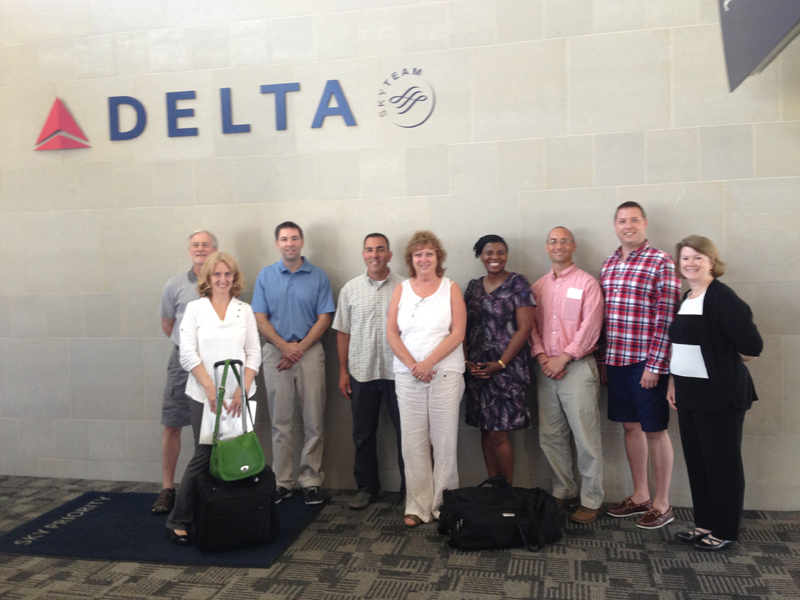
By Tara Cavanaugh
In the Ann Arbor Public Schools, we’re known for going the extra mile for our students.
Case in point: Today a group of ten AAPS teachers and administrators are going all the way to Singapore to learn about successful STEM education strategies.
The two-week trip is provided by Toyota and organized by the International Institute of Education. This is a pilot program for Toyota, which has supported a similar initiative on a smaller scale over the past 14 years, sending teachers and librarians abroad. The new Toyota International Program in STEM is designed to have a larger impact on an entire district.
The AAPS staff will learn about Singapore’s STEM educational practices, which are renowned for their success. “We want to learn how their students have such high achievement in those areas, and we are hoping to strengthen our system,” said Deputy Superintendent for Instructional Services Alesia Flye.
Flye will make the trip along with nine other AAPS staff who represent many of the district’s instructional and administrative levels: Merri Lynn Colligan, director of instructional technology; Robin Bailey, coordinator of visual and performing arts; Jason Skiba, Huron assistant principal; Rick Weiler, Tappan assistant principal and certified math teacher; Amy Deller, Pioneer science teacher and science chair; Angela Newing, Forsythe math teacher and math chair; Ted Emch, Pioneer science and computer programming teacher; David Caine, Huron science teacher; and Tom Pachera, lead teacher of the Design, Technology and Environmental Planning magnet at Skyline.

“Although the focus is initially at the high school level, we do have a middle school principal who will be joining us in this first trip because ultimately we hope to see a seamless bridge of learning experiences at the middle school and eventually the elementary level as well,” Flye said. “Our overall goal is to develop a strong STEM program that extends from the pre-K level to twelfth grade.”
The group will visit three Singapore schools, take professional development training courses through the Academy of Singapore Teachers, and even offer presentations about their own successful STEM strategies used at AAPS.
A key aspect of the trip is the integration of arts education. The district already has a strong humanities program that connects the arts into science, math and social studies lessons. The emphasis on curriculum integration across disciplines creates experiences for diverse learners to receive instruction in their particular learning modality. Director of Instructional Technology Merri Lynn Colligan also pointed out that art and design is transforming technology and that an engineer also has to be creative too. “Information technology, communication, art and design, they’re all combining together,” Colligan said. “It’s important that we are able to have our students grow within that.”
After the trip, the ten staff will begin working on specific STEM learning goals for high schools. They will also help Toyota further develop the pilot program for use in other districts across the nation.
Toyota plans to continue working with the district as it develops the program, and next year, Flye hopes AAPS can send yet another group of up to 25 staff to Singapore.
The local Toyota technical center has developed a strong partnership with the district, sending engineers into classrooms to teach science lessons and sponsoring a traveling learning lab that taught middle schoolers about environmental issues this spring.
Flye is thrilled to see Toyota continue to work with the district. “We’re excited about this opportunity,” said Flye. “We think this is a great partnership with Toyota and that our students and our teachers will gain a lot from the experience.”
Related on the AAPS News


2 Trackbacks / Pingbacks